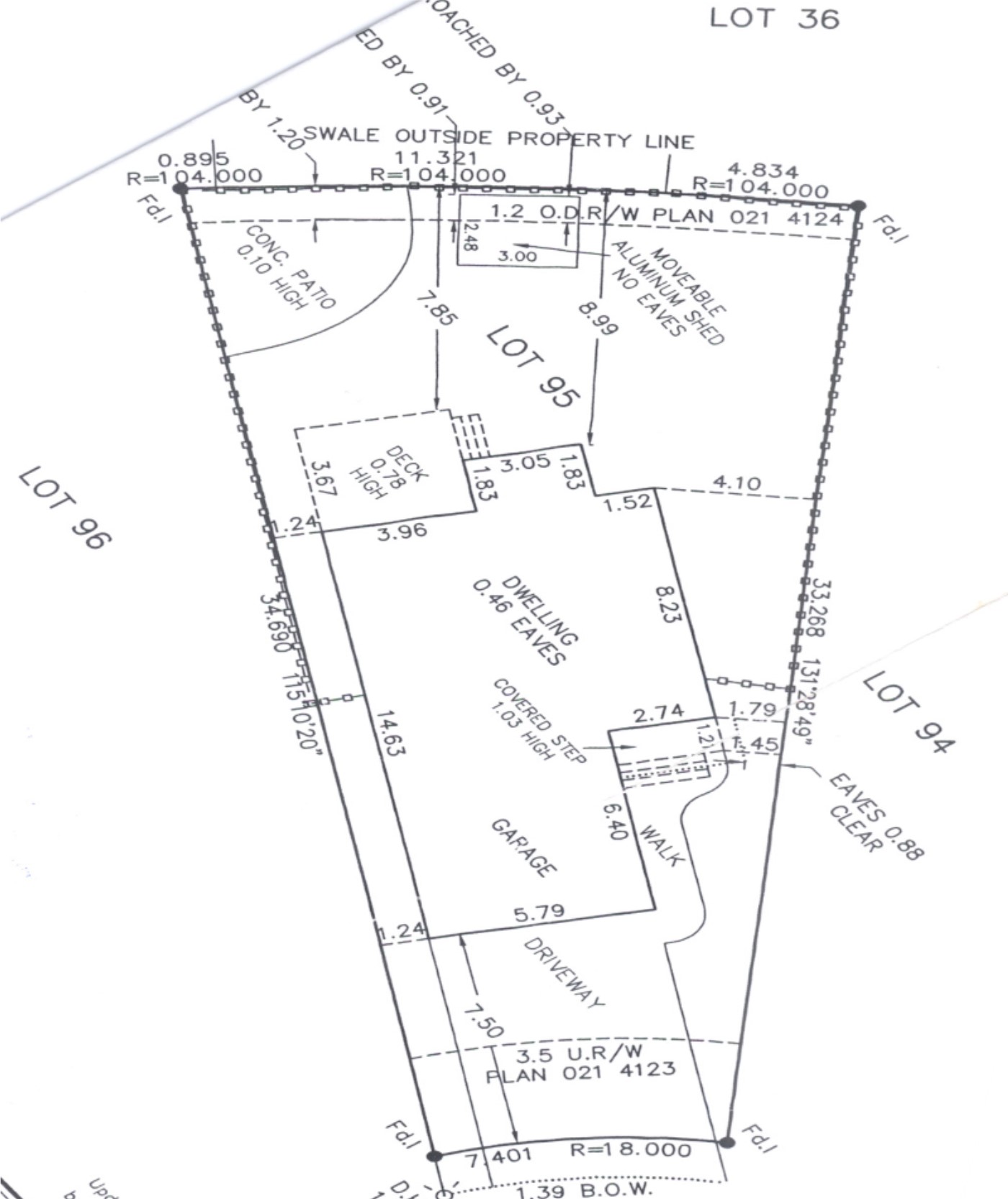When you sell your property, you will be required to provide a current Real Property Report with the City of Calgary compliance stamp to your lawyer on or before possession day. This document will be forwarded to the buyer’s lawyer and must reflect the current state of the property and all permanent structures on it.
What is a Real Property Report (RPR)?
A Real Property Report (RPR) is a legal document prepared by a registered Alberta land surveyor. It provides a detailed, scaled drawing of a property, showing:
Property boundaries
Structures and buildings on the lot (e.g., house, garage, shed)
Easements and utility rights-of-way
Encroachments (structures that extend beyond property lines)
Improvements such as decks, fences, and driveways

The RPR ensures that all permanent structures on the land comply with municipal bylaws and property regulations.
Why is an RPR Important When Selling a Home?
In Calgary, sellers (single family homes, semi-detached homes, townhomes, bare land condos) are required to provide a current RPR with municipal compliance before closing a sale. Here’s why it matters:
Confirms Legal Boundaries – Buyers need assurance that the property they are purchasing aligns with the legal land description.
Ensures Compliance with City Bylaws – The City of Calgary reviews RPRs to ensure structures meet setback requirements, zoning regulations, and permit approvals.
Prevents Delays in the Sale – An outdated or missing RPR can delay closing and cause last-minute legal complications with financial implications.
Protects Both Buyer and Seller – An RPR helps resolve disputes over fences, sheds, or encroachments before the transaction is finalized.
How to Get an RPR in Calgary
If you don’t have an existing RPR, you’ll need to hire a licensed Alberta land surveyor to create one. The process includes:
Surveying the Property – A professional will measure boundaries and structures.
Creating the Report – The surveyor prepares the official document with all necessary details.
Submitting for Compliance – The RPR must be reviewed and stamped by the City of Calgary to confirm that it complies with municipal regulations.
In Calgary, a Real Property Report (RPR) typically costs between $500 and $950 for a single-family detached home, with costs varying based on property size, complexity, and whether it's a new report or an update to an existing RPR.
Here's a more detailed breakdown:
New RPR: Expect to pay approximately $500 to $950 for a new RPR for a single-family detached home.
RPR Update: If you have an existing RPR and need an update, costs can be lower, but it depends on the changes since the original report.
Factors Affecting Cost:
Property Size and Complexity: Larger lots and more complex properties will likely cost more.
Surveyor: Costs can vary depending on the land surveyor you choose.
Rush Service: Some companies offer expedited services for an additional fee.
City of Calgary Compliance Stamp: The City of Calgary compliance stamp costs $189.
What If Your RPR is Outdated?
If you’ve made any changes to your property, such as adding a new deck, fence, A/C, garage, or shed, your old RPR will no longer be valid. In this case, you will need an updated RPR to reflect these changes.
Be aware that if you made a change such as a new deck, the City of Calgary will look at the entire property report and apply updated bylaws.
Common RPR Issues & How to Fix Them
Sometimes, an RPR reveals problems that could delay a sale, such as:
Encroachments onto a Neighbor’s Property – This may require a legal agreement between homeowners.
Non-Compliant Structures – If a garage, fence, or deck violates bylaws, you may need to apply for a variance or remove/modify the structure.
Missing Compliance Stamp – Without a municipal compliance stamp from the City of Calgary, the RPR will not be accepted by buyers or their lawyers.
A Real Property Report is an essential document when selling a home in Calgary. Ensuring you have a current and compliant RPR can prevent last-minute issues, protect both parties, and streamline the transaction process. If you’re planning to sell, check your RPR early and update it if necessary.
Have questions about your RPR? Give me a shout.






.png)








